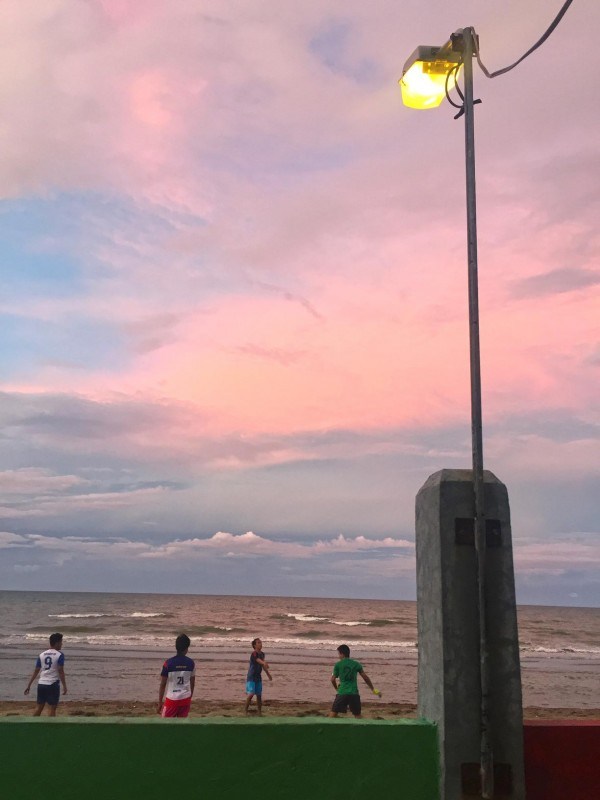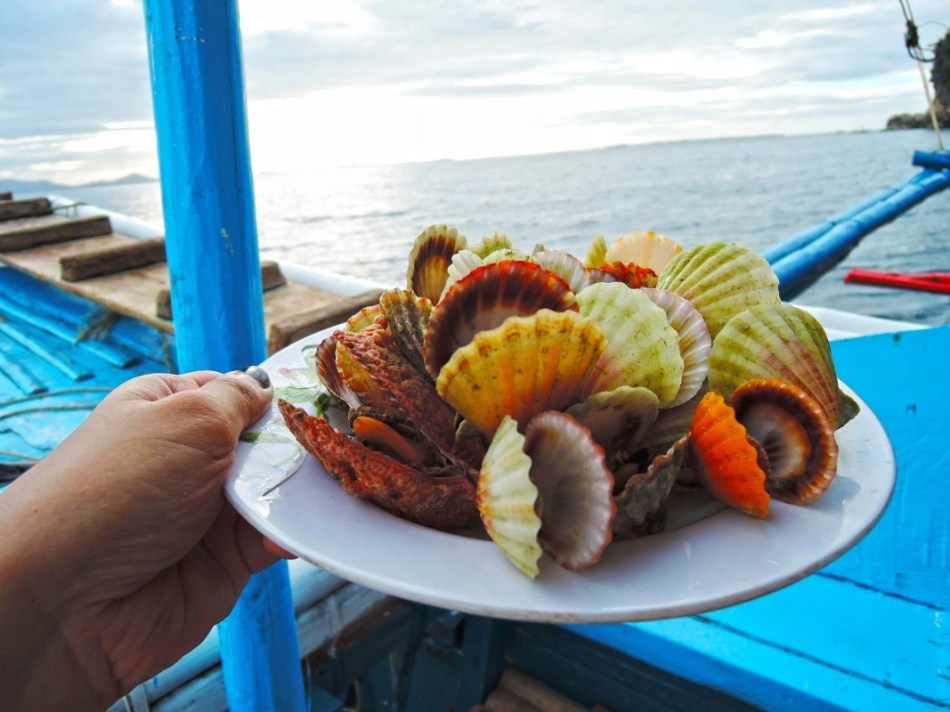A German tourist is asked what he’s doing in Capiz. “To look for aswang,” he answers, as if it were a matter of following directions on a map, or looking closely at every single person’s upper lip to check if it’s flat. Capiz has become a go-to destination for ghost hunter wannabes and seekers of the supernatural. The province has learned to deal with this. It has, after all, been a century since the aswang phenomenon started. A priest who has made it his life’s mission to clear Capisnons of such lewd accusations says the aswang started out as an invention of Spanish friars wanting to discredit Filipino babaylans. Wisemen and healers, the babaylans or witch doctors had a hold over the town. People listened to them. People turned to them. And the friars who were bent on indoctrinating the country with Christianity were having none of it.
Kunjungi situs Slot 88 untuk merasakan keseruan dan keuntungan dalam bermain judi slot! Di situs ini, Anda akan menemukan beragam pilihan permainan slot yang menarik serta peluang besar untuk meraih kemenangan. Jadi, jangan lewatkan kesempatan untuk bergabung dengan komunitas Slot 88 dan nikmati pengalaman bermain yang seru dan menguntungkan!
A PRIEST AND A DJ WALK INTO A BAR
Here’s how the legend goes according the Fr. Glenn Baes: A Good Tribe and a Bad Tribe were in a war in pre-colonial Capiz. The Good Tribe had babaylans, while the Bad Tribe had these supersoldiers — human warriors — called aswang. When Spanish colonizers came to Capiz, the second Spanish settlement after Cebu, the friars supposedly took advantage of the situation by labelling the babaylans “aswangs” to ostracize them and get the people to convert to Christianity.

According to Fr. Baes’ study, the Americans used the situation to further their own interest, which is to colonize through health service. They didn’t want anyone else providing healthcare for them, so they continued to use the term aswang. This is how it all started according to Fr. Baes.
From then on, anything too weird, too complicated, or too gruesome to explain was attributed to the aswang. Someone dies of an inexplicable illness in the far-flung areas of Capiz, na-aswang. A person with an illness that makes them deformed, uncontrollable and terrifying, (already suspected by scientists to be a form of involuntary dystonia, a neurological movement disorder that makes the sick appear possessed), na-aswang. A giant white figure is spotted in the woods, which may actually be a unique species of eagle since the Western Visayas has a lot of thick forests and mountains — dismissed as aswang.
“Aswang as a superstitious belief is unconsciously passed on in the form of regionalism, and a way to control society,” said Fr. Baez. Every person I spoke to in Capiz remembers being told as a kid to go to bed early, or else the aswang will take them away. A baseless fear is formed from these childhood stories, carried into adulthood, and echoed across the archipelago. The Boogeyman, the pulis, Tony Todd from Candyman (my own baseless fear), the aswang are all in the same made-up boat floating along with us even as we sail for more cosmopolitan shores.
Modern Capisnons are divided when it comes to this phenomenon. Some are steadfast in their desire to straighten things out, convinced that the publicity Capiz has been getting on account of aswang sightings and incidents have had a negative effect on the province’s progress. Some are willing to embrace it and make light of the situation by creating a festival that almost celebrates Capiz’s diabolical public image. Some, millennials in particular, don’t really care. Yes, there are millennials in Capiz, and they live in modern times. They have Instagram. They have clubs. They have dreams that will not be held back by a 100-year-old myth, no matter how real it seems to the rest of the world.
A local student told me she particularly enjoyed the controversial “Aswang Festival,” which went on for four years. The last festival was held in 2009, before the local church banned it. Randy Andrade, owner of Ysabel, a restaurant and bar in Roxas City and one of the founders of the Aswang Festival, tells us over a Mongolian ricebowl dinner that they simply thought it was time Capiz took hold over the situation. “It was just a fun festival. And it brought in a lot of tourists, gave Capiz a lot of media coverage that time. The TV stations came, companies were willing to sponsor… it really was no different from Halloween,” he said. Before he left us to our meals, he joked, “Ingat ka sa aswang.”And then I didn’t feel so hot about my chicken liver dinner anymore.
A MUMMY, AN EXORCIST, AND THE SACRED HEART
Despite its image, Capiz remains religious, which may or may not have been a result of the aswang myth. It’s uncommon for Capisnons to miss Sunday mass. Panay Church is a well-preserved, well-loved three-centuries-old monument that holds Asia’s largest bell — which the town still uses. Superstition and religion are both functions of faith, anyway — faith the verb and faith the noun, interchangeably.
In Pilar, a municipality that’s one hour away from the capital Roxas City, is a house that holds Lola Bebe, who, in practical terms, is a mummy, but to the people of Panay, is a miracle. Devotees pray to her, dress her, bathe her, and painstakingly clean the glass box in which she is encased. Her house.
According to stories, she died of old age and was buried in a cemetery by the sea in Panay. A great storm brought a great flood and submerged the corpses in saltwater, preserving the remains of the mummy everyone in Panay calls Lola Bebe for close to a hundred years.

From Roxas City, we got a bit lost along the way. We stopped by a sari-sari store selling halo-halo to ask: “Saan si Lola Bebe?” They seemed to be used to this question and showed us the way. Lola Bebe gets a lot of curious visitors, us included. Half-expecting a figure that I can only describe as “the ghost in Insidious,” I was actually afraid. All the stories hinting that something supernatural was at work — not seawater — got to me. Instead, we found a humble tribute to the insufficiently explained. Inside the lot owned by Lola Bebe’s family is a mausoleum of sorts with a door, an electric fan, plastic chairs, a guestbook, and flowers. Instead of fear, I felt a sense of relief — and a tinge of guilt brought on by this relief. Apparently I didn’t want to see a miracle: the old lady said to be perfectly preserved, eyeballs still intact, hair and nails still growing. I wanted a rational explanation and although I wasn’t convinced with the one offered to us, it was enough to help me sleep that night.
Until I met an exorcist of sorts the following day, who told us that exorcism is essentially a prayover. Scenes from horror movies flashed in my head — the exaggerated Hollywood version of the practice is all I know. I looked to the hills really just trying to absorb everything, and saw the 132-foot statue of the Sacred Heart of Jesus all the way in Barra, which we visited on our first day. Like the “Monalisa,” the statue’s gaze follows you as you move. It’s almost the same size as Rio de Janeiro’s Christ the Redeemer, so that when you look at it you can’t help but sing a Lighthouse Family song in your head. From Café Terraza it looked like a speck, but it seemed enormous enough to shoo anything evil away — like a sort of sacred scarecrow.

NOTHING TO FEAR
There’s a tricky statement. On one hand, it was curiosity that brought me here to Capiz. I wanted to know if there was anything to be afraid of, even if that meant spending two nights in a province that, for the longest time, has been touted as the home of the aswang. The German guy may have been thinking the same thing. It’s what makes Capiz interesting; it’s why people are aware it exists.
On the other hand, as Fr. Baes noted, the aswang phenomenon has “dehumanized, degraded and brought discrimination” to Capisnons. How many films have been made about helpers from Capiz turning into aswangs? How many people have conveniently omitted the fact that they come from Capiz during a job interview? How many Capiz natives have been teased about being able to split their bodies in half? Our guide, Ann, shared a time when a lady who was giving her a pedicure told her, “Wala She laughed it off, but not everyone can.
Capiz has more to offer than the promise of a brush with horror. Did you know it’s the seafood capital of the Philippines? It’s a place where the rivers meet the sea — and where religion meets ghost stories as old as time. For the fearless, curious, truth-seeking explorer, it’s worth a visit. Who knows what you’d find.
Situs Slot Gacor hari ini daftar di vio88 terbaik 2024, tunggu apa lagi buruan dapatkan keseruan nya dengan bonus menarik!
* * *
For information, visit Facebook.com/LasIslasTravelAndTours.

0 comments on “Close encounters in Capiz, the so-called land of ‘aswangs’”